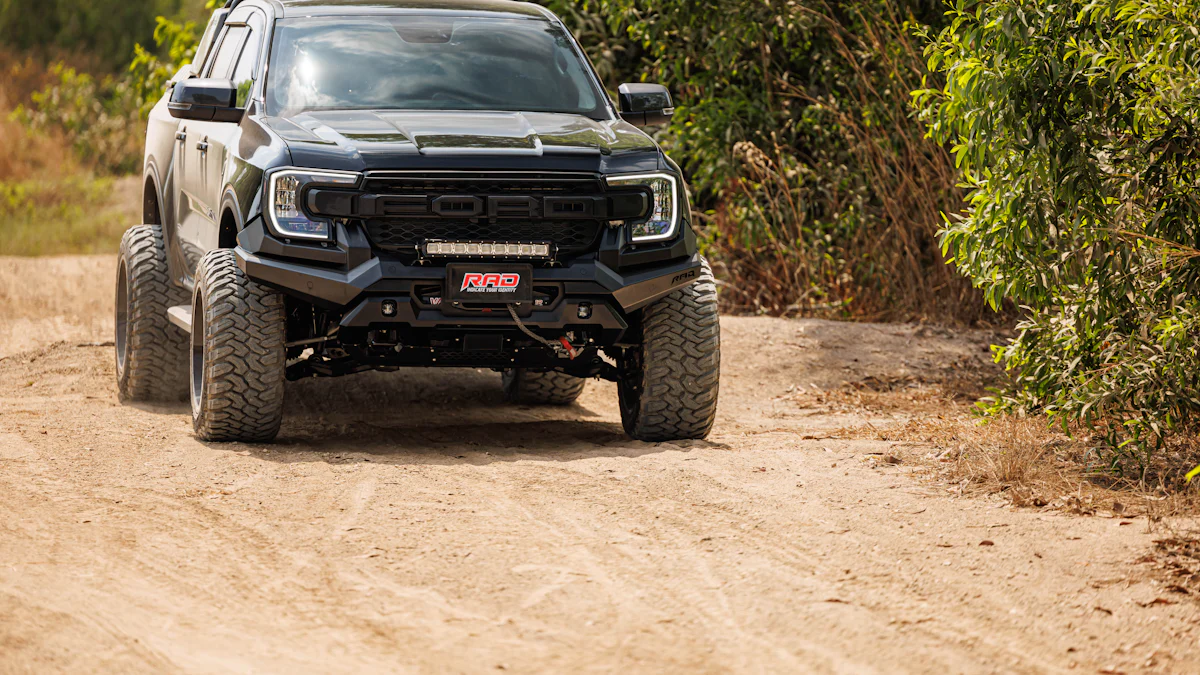
Choosing the right loading ramp ensures safety and efficiency. A proper ramp prevents accidents and supports heavy equipment. Businesses rely on ramps for smooth operations. A variety of loading ramps exist to meet different needs. Some ramps handle up to 5000 lbs, crucial for commercial use. Proper maintenance extends ramp life. The correct ramp enhances operational flexibility and complies with safety standards. Always assess load requirements and ramp type for optimal performance.
Types of Loading Ramps

Folding Loading Ramps
Folding loading ramps offer flexibility and convenience. These ramps fold for easy transport and storage. Portability makes them ideal for various situations.
Straight Folding Ramps
Straight folding ramps provide a direct path for loading. These ramps suit consistent height loading. Users find them effective for straightforward tasks.
Curved Folding Ramps
Curved folding ramps help with smoother transitions. The curve reduces the risk of equipment bottoming out. This design enhances safety during loading.
Telescoping Folding Ramps
Telescoping folding ramps adjust in length. Users can customize these ramps for different vehicles. This feature adds versatility to loading operations.
Arched Folding Ramps
Arched folding ramps offer extra clearance. The arch allows for easier loading of low-clearance equipment. This design supports a variety of loading needs.
Non-Folding Loading Ramps
Non-folding loading ramps provide stability. These ramps come in different designs to match specific requirements. Durability makes them suitable for heavy-duty tasks.
Straight Non-Folding Ramps
Straight non-folding ramps deliver a simple solution. These ramps support consistent loading heights. Users appreciate their straightforward functionality.
Curved Non-Folding Ramps
Curved non-folding ramps ensure smooth transitions. The curve helps prevent equipment damage. This design enhances safety and efficiency.
Telescoping Non-Folding Ramps
Telescoping non-folding ramps offer adjustable lengths. Users can adapt these ramps for various loading scenarios. Flexibility makes them a valuable choice.
Arched Non-Folding Ramps
Arched non-folding ramps provide additional clearance. The arch design accommodates low-clearance vehicles. This feature supports diverse loading applications.
Features, Benefits, and Drawbacks
Portability
Loading ramps offer varying degrees of portability. Portability becomes crucial when frequent transportation is necessary.
Ease of Transport
Folding loading ramps excel in ease of transport. The ability to fold reduces space requirements. Aluminum ramps provide a lightweight option for easy handling. Users find these ramps convenient for quick setups.
Storage Considerations
Storage considerations impact the choice of loading ramps. Folding ramps require minimal storage space. Non-folding ramps demand more room. Steel ramps, while durable, occupy more space due to their weight and size.
Weight Capacity
Weight capacity plays a vital role in selecting loading ramps. Different materials and designs cater to various load limits.
Load Limits
Aluminum ramps support lighter loads effectively. Steel ramps accommodate heavier equipment with greater weight capacity. Understanding load limits ensures safety during operations.
Material Strength
Material strength determines the durability of loading ramps. Aluminum offers a balance of strength and lightness. Steel provides superior durability for heavy-duty tasks. Users must assess material strength based on specific needs.
Ease of Use
Ease of use enhances the efficiency of loading ramps. Simple setup processes and user-friendly features improve operational flow.
Setup Process
The setup process varies among loading ramps. Folding ramps offer quick and straightforward assembly. Non-folding ramps may require more time for setup. Users benefit from clear instructions and minimal tools.
User-Friendly Features
User-friendly features simplify the use of loading ramps. Telescoping ramps allow length adjustments for different vehicles. Arched designs facilitate smoother transitions. These features enhance the overall loading experience.
Choosing the Right Ramp

Selecting the right loading ramp involves evaluating several factors. Each truck type requires a specific ramp to ensure safety and efficiency. Understanding your truck’s needs will guide you in making an informed decision.
Based on Truck Type
Pickup Trucks
Pickup trucks often require versatile loading ramps. These ramps need to accommodate various loads and terrains. A folding loading ramp suits pickup trucks due to its portability. The ability to fold allows easy storage in limited spaces. Lightweight materials like aluminum enhance ease of use.
Box Trucks
Box trucks demand robust loading ramps for heavier loads. Non-folding loading ramps provide stability for these vehicles. Steel ramps offer the necessary strength for box trucks. Durability ensures long-term use without frequent replacements. Consider ramps with higher weight capacities for box trucks.
Based on Load Weight
Light Loads
Light loads benefit from lightweight loading ramps. Aluminum ramps handle lighter equipment effectively. Portability becomes a key factor for light loads. Folding ramps offer convenience for quick setups. Users find these ramps easy to transport and store.
Heavy Loads
Heavy loads require strong and durable loading ramps. Steel ramps accommodate heavier equipment with ease. Non-folding ramps provide the stability needed for heavy loads. High weight capacity ensures safety during operations. Users must assess load limits to prevent accidents.
Based on Frequency of Use
Occasional Use
Occasional use calls for versatile loading ramps. Folding ramps suit users who need ramps infrequently. Portability allows easy storage when not in use. Lightweight materials make handling simple for occasional tasks. Users appreciate the convenience of folding ramps for sporadic needs.
Regular Use
Regular use demands durable and reliable loading ramps. Non-folding ramps offer the necessary stability for frequent use. Steel ramps withstand regular wear and tear. High weight capacity supports consistent loading operations. Users benefit from investing in quality ramps for regular tasks.
Choosing the right loading ramps requires careful thought. Consider the type of truck and the weight of the load. Evaluate how often you will use the loading ramps. Each factor plays a crucial role in ensuring safety and efficiency. Assess your specific needs before making a purchase. The right loading ramps enhance your operations and provide peace of mind.









